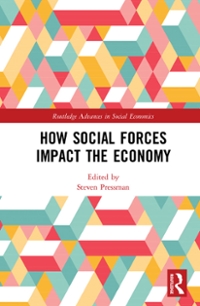3. Assessment Task For parts (a) and (b) below, consider the following two periods in the case for Australia: > Period 1. Pre-stock control measures (February to early March 2020) Period 2. Stock control measures (mid-March to April 2020) during 'lockdown' Part (a) - 15 Marks Read the following key article: https://theconversation.com/a-toilet-paper-run-is-like-a-bank-run-the-economic-fixes-are-about-the-same-133065 You are to construct relevant payoff matrices in relation to period 1. Firstly, construct a payoff matrix using words, describing each quadrant. Secondly, from that work on a payoff matrix with some numbers in each quadrant. To help you construct the payoff matrix, here are the key parameters: There are two players - player 's' you, and player 'b' everyone else. There are two strategies - panic buy or act normally. Each strategy has an associated payoff. Think of this as a non-cooperative, simultaneously played game: this is a game played once and is repeated more than once, yet the rules, players, and payoffs are the same each time. Assume players have self-regarding preferences. In your video presentation, you will need to do a couple of things. Firstly, you need to introduce yourself (full name) and which class you attend. Secondly, all you need to do is explain each Nash equilibrium in the numerical payoff matrix. The video presentation should take no longer than 5 or so minutes. Details on where to upload the video will made available on Bb in the Assessments tab. Part (a) is worth 15 marks: 10 marks for the graphical and written analysis; 5 marks associated with the video presentation where you will be assessed on the clarity of your exposition and 'natural' understanding of Nash equilibria (e-g. do not simply read off from notes or rote learn a response). Part (b) - 5 Marks Read the following key article: https://theconversation.com/the-game-theory-of-panic-buying-and-how-to-reduce-it-134107 In period 2 evaluate the efficiency and equity aspects of the organisational policy when companies restricted sales (e.g. placing limits on hand sanitiser to just two bottles per customer). Do a small amount of research online to see what measures were undertaken by the supermarkets. In your analysis, discuss the role of preferences amongst the players and how this affects the allocation. (note: there is no need to construct payoff matrices for part (b)). Part (c) - 5 Marks As an extension, read the following key article on what happened in the United States in early March 2020: https://www.nytimes.com/2020/03/14/technology/coronavirus-purell-wipes-amazon-sellers.html You are to construct a relevant payoff matrix (with numbers only) in relation to the first few days of March 2020 and consider first mover advantages of the game played sequentially. In this game, there are two players - player a and player b' . Player 'a" is a representative hoarder (buyer come seller). Player 'b' is a representative single buyer. Assume players are acting rationally. You will need to work out what the two strategies are and the associated numerical (hypothetical) payoffs. In your analysis, discuss the role of preferences amongst the players and how this affects the allocation







